Transcript:
[0m:4s] Hi I'm Josh Bloom, welcome to another video in the RSP Supply education series. If you find that these videos are helpful to you, it certainly helps us out if you could give us a big thumbs up and subscribe to our channel.
[0m:16s] In today's video, we are going to be talking more about the instrumentation that you will commonly see being used in many different industrial applications.
[0m:25s] More specifically, we are going to be talking about electromagnetic flow meters or sometimes refer to as Mag flow meters.
[0m:33s] In this video, we hope to explain the basics of how one of these flow meter works and also talk about some of the common areas that you might see these types of flow meters being used in.
[0m:45s] Keep in mind that depending on the manufacturer of the flow meter hat is being used, some of the technology may vary, but the defining principles of how these flow meters will remain the same. Before we talk about how Mag flow meters work, let's first talk about what a flow meter is and why we use them. Flow meters are intended to measure the flow of a certain substance, commonly some some type of liquid through piping that is being transported from one location to another.
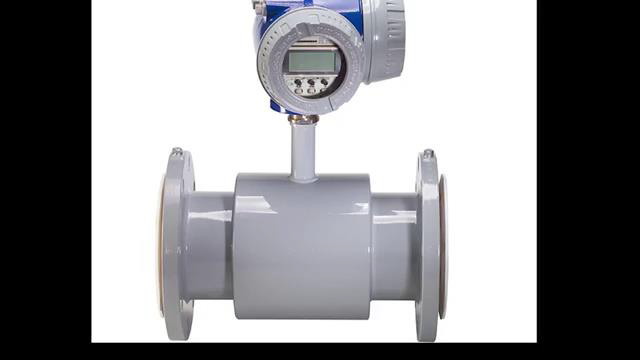
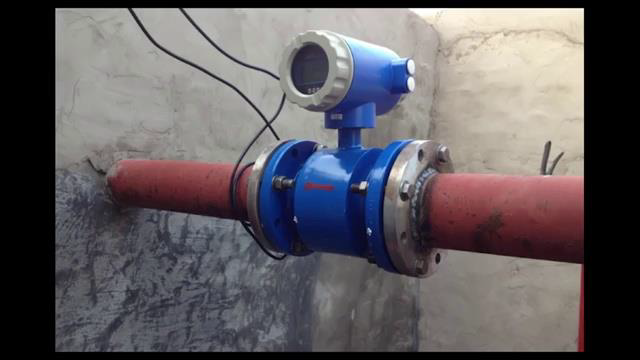
[1m:16s] Flow meters provide us information as to how much of a certain substance is flowing. based on the size of the pipe hat is being used the flow meters should be able to tell us how much volume is flowing, and also how fast the substance is flowing through the pipe. Electromagnetic flow meters are just one type of flow meter. However, there are other types of flow meters that can be used, which we will not talk about in this video. Now that we know what a flow meter is, let's talk about Mag flow meters and how they work.
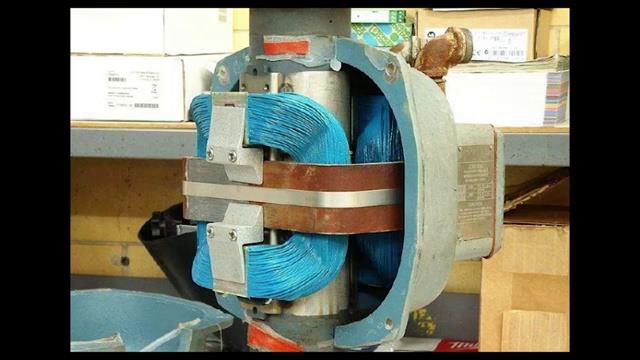

[1m:49s] As mentioned before flow meters are designed to measure how much of a certain substance is flowing through a pipe.
[1m:56s] The substance could be anything from water to some kind of slurry mixture or even chemicals.
[2m:2s] When talking about a mag flow meter, it is important that whatever the substance is flowing through the pipe that it is actually a conductive substance. This conductive substance, commonly some kind of fluid, is what can assist the mag flow meter in reading voltage levels that are directly correlated to how much is flowing through the pipe.
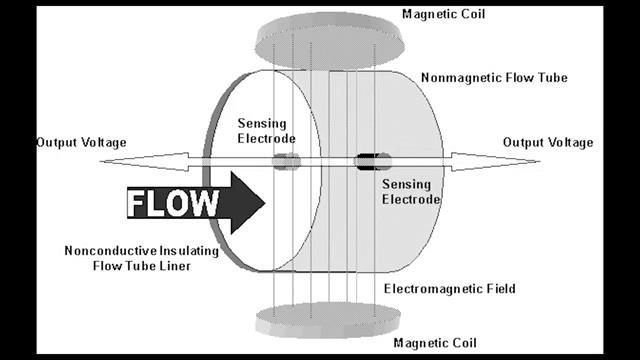
[2m:23s] So how does this work?
[2m:25s] First and foremost, Mag flow meters are intended to be installed in line with the piping that is carrying the material,
[2m:32s] and the diameter of the four-meter pipe should be the exactly same size as the piping carrying the material. Within the flow meter piping, there are two field coils located on opposite sides from one another.
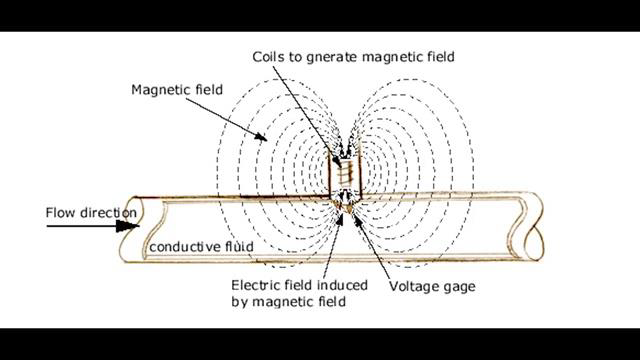
[2m:46s] These field coils will generate an electromagnetic field over the entire cross section of the measuring pipe of the flow meter. In addition to these field coils two electrodes that have the ability to measure voltage are also installed in the flow meter on opposite sides of the field coils. One electrode on one side and another directly across from it. These electrodes are installed to measure any voltage that might be present in the fluid that will be flowing through the mag flow meter. There will also typically be some kind of lining installed on the inside walls of the flow meter that will prevent a short circuit between the conductive fluid flowing through the meter and the metallic piping. When there is no fluid flowing through the meter, there will be no induced voltage. However, when fluid does start to flow through the meter, the electromagnetic field will begin to apply a force to the charged particles in the fluid.
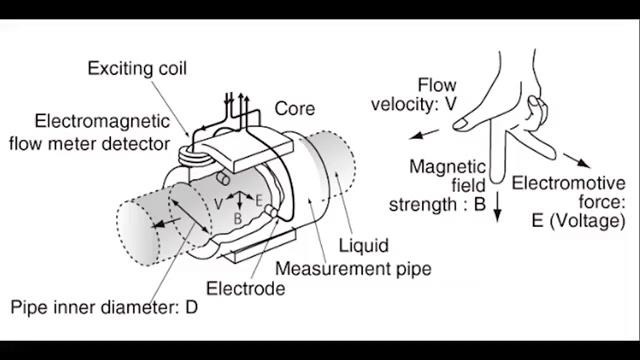
[3m:47s] Because of this, the positively and negatively charged particles begin to collect on opposite sides of the flow meter piping.
[3m:55s] When this happens, an electrical voltage will begin to form.
[3m:59s] The voltage that is being read by the two electrodes will be directly proportional to the flow moving through the piping. So, the higher the voltage level that is being read the higher the flow velocity in the pipe.
[4m:13s] With this information as well as the cross-sectional size of the pipe that is being used
[4m:19s] You can also calculate the total volume of fluid that is flowing through the pipe.
[4m:25s] These types of flow meters have other functions as well which we will not discuss in this video today,
[4m:32s] such as dealing with interference voltages that can occur within the flow meter.
[4m:37s] However, the basics of the mag flow meter are again this: an electromagnetic field is generated which when a given substance is flowing through the pipe causes positively and negatively charged particles to collect on opposite sides of the piping. This effect induces a certain voltage level that is measured by two electrodes on opposite sides of the meter.
[5m:0s] This voltage level again is directly proportional to the flow velocity of whatever substance is flowing through the pipe. Hopefully this information helps you understand the basic principles that make up how this device works.
[5m:14s] Flow meters are an essential part of many of the city water systems that are used on a daily basis, as well as in many other commercial plant, agricultural, and industrial environments. For a full line of industrial instrumentation, and thousands of other products, please store our website. For more information or other educational videos, go to RSPSupply.com, the Internet's top source for industrial hardware. And, don't forget: like and subscribe.




